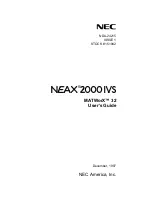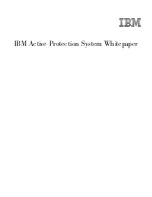
You should place the RDFCOM component on $SYSTEM.SYSTEM, or you must add the new
software location to your TACL search-subvolume list.
EMS Support
RDF/IMP, IMPX, and ZLT all support the Event Management System (EMS). They direct their
command, event, warning, and error messages to an EMS collector in the form of fully-tokenized
messages.
You can view messages in the EMS log online using Viewpoint or any other tool you normally
use for monitoring $0. When you do, so you are perusing the entire EMS log. You can, however,
use the standard EMS filter RDFFLTO to isolate RDF messages into an entry-sequenced file
which you then can examine using the RDFSCAN online utility.
SMF Support
RDF supports the use of the NonStop Storage Management Foundation (SMF) product on both
the primary and backup RDF systems. The database on the primary system can reside on SMF
virtual disks, as can the replicated database on the backup system.
All combinations of replication from physical disk to virtual disk, virtual disk to physical disk,
and virtual disk to virtual disk are supported.
There are some issues and restrictions that you should be aware of before using RDF in an SMF
environment; these are discussed in
“Using SMF With RDF” (page 65)
.
RTD Warning Thresholds
RDF/IMPX and ZLT allow you to designate a pair of RTD warning thresholds: one for the
extractor, and another for all of the updaters. Having set those thresholds, you can issue an
RDFCOM STATUS RTDWARNING
command with a designated repeat interval to display
information and statistics for only those processes (the extractor or any updater) that have fallen
behind the configured RTD threshold. For information about setting the RTD threshold, see
“SET
RDF” (page 228)
and
“RDF States” (page 113)
.
Process-Lockstep Operation
Process-lockstep operation, which is available with the RDF/IMPX and ZLT products, prevents
an application from executing further processing based on a committed business transaction
until all audit associated with that transaction is safely stored in the image trails on the backup
system.
This is accomplished by means of a new procedure, named DoLockstep, that you call immediately
after calling EndTransaction. With this lockstep protocol, the business transaction is actually
committed on the primary system prior to the start of the DoLockstep operation, but the
application is not allowed to continue processing until DoLockstep has returned status to the
application.
For information about this capability, see
Chapter 15 (page 309)
.
Support for Network Transactions
The RDF/IMPX and ZLT products support network transactions: transactions that update data
residing on more than one RDF primary system.
More specifically, the updates for a transaction on one of the two primary systems might have
been successfully transmitted and applied to the associated backup database, but a disaster
brought down the other primary system before the updates by the transaction on that system
could be sent to its backup database. After executing RDF takeover operations on both backup
systems, the data from the network transaction would be present in one backup database but
not in the one brought down by the disaster. Thus the distributed backup database is inconsistent
with regard to the affected network transaction.
Other RDF Features
55
Содержание NonStop RDF
Страница 68: ...68 ...
Страница 186: ...186 ...
Страница 260: ...260 ...
Страница 278: ...278 ...
Страница 284: ...284 ...
Страница 290: ...290 ...
Страница 308: ...308 ...
Страница 322: ...322 ...
Страница 336: ...336 ...
Страница 348: ...348 ...
Страница 464: ...464 ...
Страница 478: ......
















































